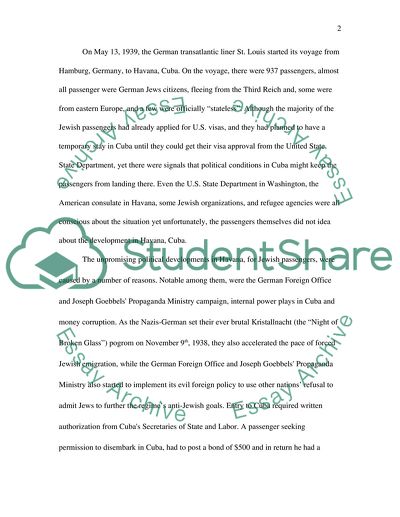Cite this document
(“Why were Jewish refuges on the SS St. Louis denied entry to Cuba and Essay”, n.d.)
Retrieved from https://studentshare.org/history/1540967-why-were-jewish-refuges-on-the-ss-st-louis-denied-entry-to-cuba-and-what-decided-their-fate
Retrieved from https://studentshare.org/history/1540967-why-were-jewish-refuges-on-the-ss-st-louis-denied-entry-to-cuba-and-what-decided-their-fate
(Why Were Jewish Refuges on the SS St. Louis Denied Entry to Cuba and Essay)
https://studentshare.org/history/1540967-why-were-jewish-refuges-on-the-ss-st-louis-denied-entry-to-cuba-and-what-decided-their-fate.
https://studentshare.org/history/1540967-why-were-jewish-refuges-on-the-ss-st-louis-denied-entry-to-cuba-and-what-decided-their-fate.
“Why Were Jewish Refuges on the SS St. Louis Denied Entry to Cuba and Essay”, n.d. https://studentshare.org/history/1540967-why-were-jewish-refuges-on-the-ss-st-louis-denied-entry-to-cuba-and-what-decided-their-fate.


